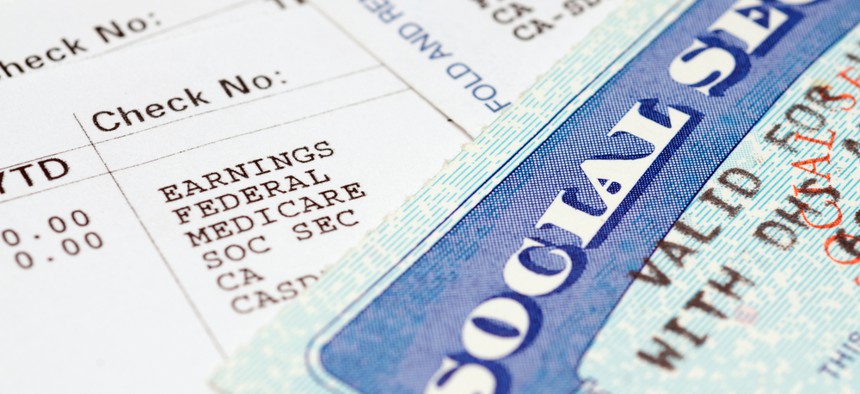Last week we explored the benefits and disadvantages of purchasing an annuity using the proceeds of your Thrift Savings Plan. This week, I’d like to consider another another question. Steven A. Sass, program director of the Financial Security Project, an initiative of the Center for Retirement Research at Boston College, puts it this way in a briefing paper: “Should You Buy an Annuity From Social Security?
In the paper, Sass describes the three traditional methods of receiving income from retirement savings: investing the principal in bank deposits or U.S. Treasury bills to preserve savings and live on the interest; investing in stocks and bonds and drawing out a portion as income; or buying an annuity. A fourth option, suggests Sass, is to delay claiming Social Security retirement income until age 70 and use your retirement savings to provide the income needed during the earlier years.
Social Security retirement benefits can be claimed anytime between the ages of 62 and 70. The full retirement age for someone who is 62 in 2014 is 66. That means, for example, that if your full benefit would be $2,000 per month at age 66, but you choose to claim the benefit at 62, it would be reduced by 25 percent, to $1,500. On the other hand, if you delay claiming the benefit until you’re 70, it would be increased by 32 percent, to $2,640.
Once a Social Security retirement benefit is claimed, it is in effect a life annuity that is fully indexed to inflation and provides a built-in spousal benefit. Sass says using retirement savings to compensate for the delayed Social Security benefit is the price you pay to purchase a larger annuity from Social Security.
Consider the example above: Delaying the Social Security benefit increases its value by 8 percent per year. At age 67, it would be $2,160 a month, or $25,920 a year -- a boost of $1,920. A retiree could use $25,920 from savings in order to buy the one-year delay in Social Security retirement. In other words, the $25,920 would be the price of the extra $1,920 per year in benefits. The annuity rate -- the additional annuity income as a percentage of the purchase price -- would be 7.4 percent.
The increase in Social Security retirement benefits is based on an actuarial determination. Suppose Bob claims his benefit at 62 at $1,500 per month and Jane claims hers at 70 at $2,640 per month. If they both die at age 81, they will have received roughly the same amount of benefits. (Bob will have received $342,000 and Jane $348,480). I’ve ignored cost-of-living adjustments in this calculation in the interest of simplifying it, but Social Security would provide annual COLAs to both Bob and Jane’s benefit from age 62, even if Jane delays her benefit until she’s 70.
Sass notes that in contrast to Social Security benefits, commercial annuities can’t be “actuarially fair.” Insurance companies have expenses such as marketing, management and risk-bearing costs that must be added to the actuarial price of the annuity. Also Social Security benefits are based on the life expectancy of the average American. Individuals who typically purchase commercial annuities generally have above average life expectancy. This is because the only chance of getting your money back from the cost of an annuity purchase is to outlive your life expectancy.
According to Sass, “buying an annuity” from Social Security, especially in today’s low interest rate environment, is the best deal in town. I would add that if you’re still working, then you could also delay receiving Social Security without tapping your retirement savings at all.
Here’s the bottom line: If you’re covered under the Federal Employees Retirement System and can live off of income from your retirement benefit and savings (without tapping the proceeds of your TSP account), then delaying Social Security to age 70 is probably worth it. Unfortunately, knowing just how long you’ll live is the best indication of when you should claim your Social Security benefit. Social Security actually provides a life expectancy calculator to help you, but of course there are no guarantees.
If you want to explore these issues further, I will be partnering again with Micah Shilanski for a new three-week webinar series on the “Seven Secrets of Social Security.” The series will begin Aug. 14 and registration will open soon.
(Image via chuckstock/Shutterstock.com)
NEXT STORY: TRICARE Increases Mental Health Care Providers








